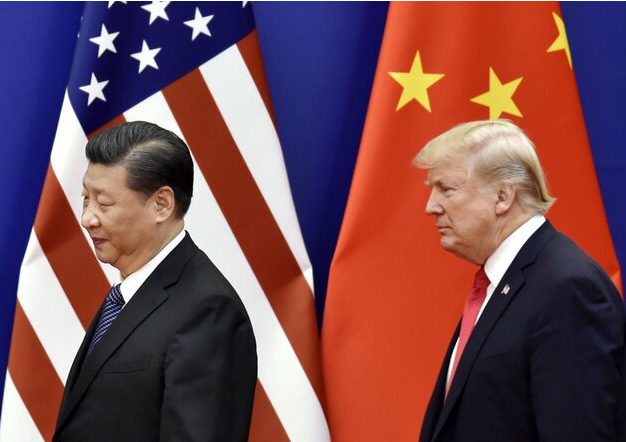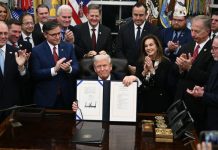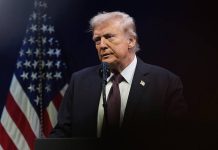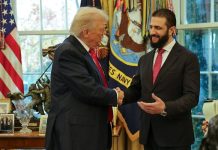WASHINGTON – U.S. President Donald Trump on Friday threatened to impose an additional 100 percent tariff on imports from China and hinted at calling off an upcoming meeting with its leader Xi Jinping after Beijing this week announced export controls on rare earth elements essential for high-tech manufacturing.
Trump said on social media that the United States will introduce the tariff starting Nov. 1 or sooner, depending on any further actions taken by China, potentially reigniting a trade war between the world’s two largest economies.
In addition to increasing the prospects of a return to triple-digit tariffs on each other’s products, Trump said his administration plans to also impose export controls on all critical software products beginning on the same date.
“It is impossible to believe that China would have taken such an action, but they have, and the rest is History,” he wrote.
During an event later at the White House, Trump, however, said he still intends to visit South Korea and hold talks with Xi.
“I don’t know that we’re going to have it, but I’m going to be there regardless. So, I would assume we might have it,” he said, when asked by a reporter to confirm he had decided to cancel the meeting.
He suggested that there may still be an opportunity for the two countries to change course, saying, “That’s why I made it November 1. We’ll see what happens.”
“I have a very good relationship with President Xi, and they did that. This is not something that I instigated,” Trump added.
“This was a real surprise,” Trump said earlier in a separate social media post, referring to China’s plan to tighten some restrictions on items related to rare earths beginning Nov. 8, two days before another extension of a 90-day trade truce between Washington and Beijing is set to expire.
He said that “now there seems to be no reason” to meet with the Chinese president in South Korea later this month, calling China’s latest action “sinister and hostile” toward not only the United States but also the rest of the world.
Trump’s initial social media post warning of “massive” tariffs on China caused consternation on Wall Street, leading the tech-focused Nasdaq index to plunge 3.6 percent and the S&P 500 to recede 2.7 percent before the closing bell.
China on Thursday announced a set of new export controls, adding holmium and four other types of rare earths to the list in addition to the seven it announced in April.
China dominates the global supply of rare earths and other minerals vital for various modern technologies, from electric vehicles to weapons systems.
The restrictions also require export licenses for technologies used in rare earth mining, smelting, magnetic material manufacturing and recycling.
China said the new steps are needed to prevent other countries from endangering its “national security and interests.”
Following a phone call with Xi in September, Trump said the two agreed to meet in person when both travel to South Korea for an Asia-Pacific economic summit set to begin at the end of this month.
Trump has yet to either travel to Asia or meet face-to-face with Xi since returning to the White House in January for a nonconsecutive second term. The two most recently held in-person talks in 2019 on the margins of a Group of 20 summit in Osaka.
Until Friday’s social media posts, Trump had been softening his rhetoric on China in tandem with easing trade tensions and expressing hope for progress on key issues during the forthcoming talks.
Last week, Trump said China’s halting of its American soybean purchases would top the agenda of their meeting.
The United States and China paused their trade war in May, temporarily dropping the triple-digit retaliatory tariff rates on each other’s goods.
As of late September, the average U.S. tariff on Chinese imports was 57.6 percent, while China’s on goods from the United States was 32.6 percent, according to data from the Peterson Institute for International Economics.
Senior U.S. and Chinese officials have been in regular contact in recent months, with foreign policy experts viewing the Trump-Xi meeting as part of efforts by both sides to lay the groundwork for them to engage more deeply with each other in 2026.
During the phone conversation with Xi, Trump also said he had agreed to visit China early next year, and that the Chinese president would reciprocate with a U.S. visit at “an appropriate time.”
BY: The Times Union







